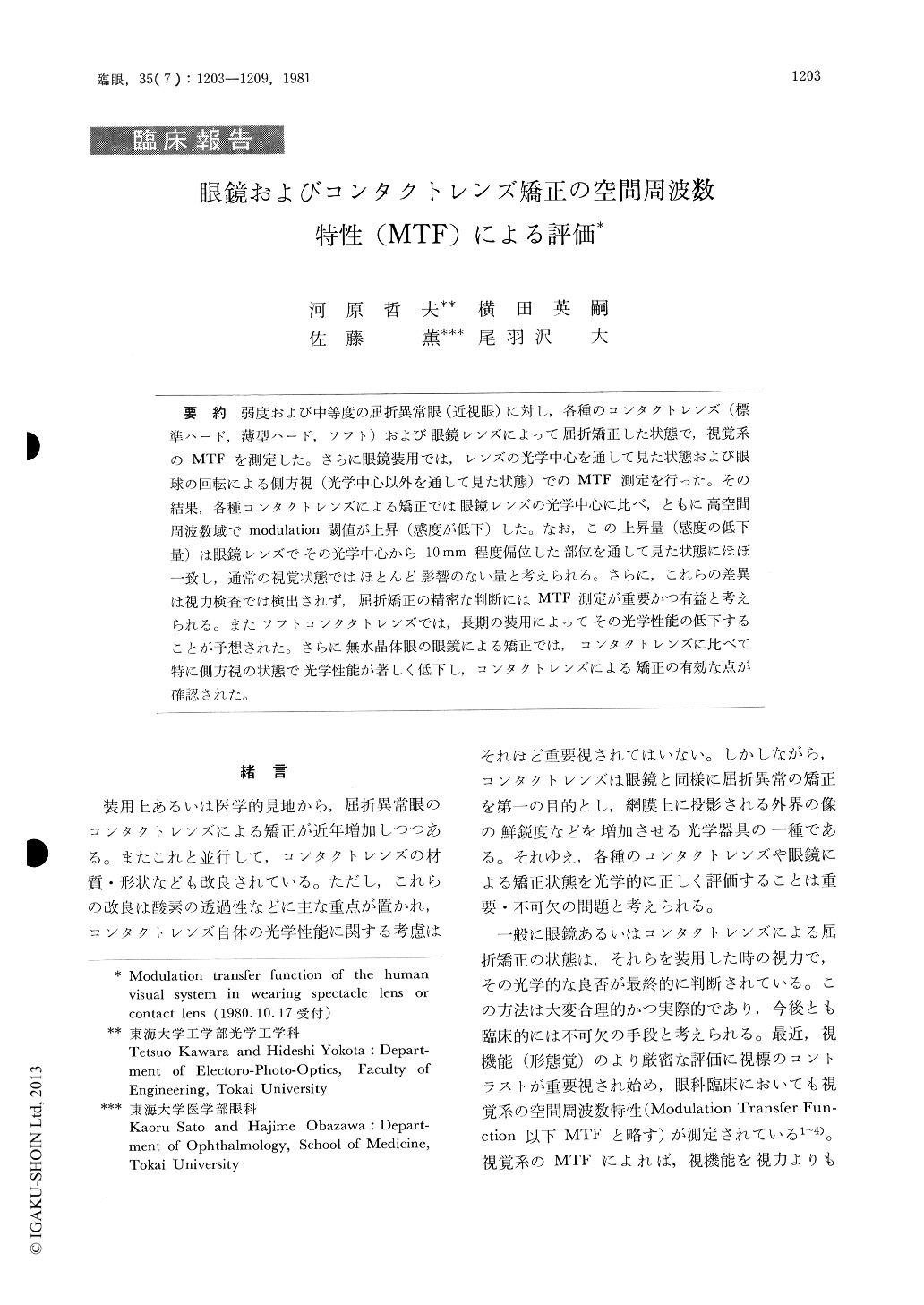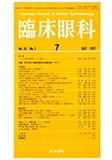Japanese
English
- 有料閲覧
- Abstract 文献概要
- 1ページ目 Look Inside
弱度および中等度の屈折異常眼(近視眼)に対し,各種のコンタクトレンズ(標準ハード,薄型ハード,ソフト)および眼鏡レンズによって屈折矯正した状態で,視覚系のMTFを測定した。さらに眼鏡装用では,レンズの光学中心を通して見た状態および眼球の回転による側方視(光学中心以外を通して見た状態)でのMTF測定を行った。その結果,各種コンタクトレンズによる矯正では眼鏡レンズの光学中心に比べ,ともに高空間周波数域でmodulation閾値が上昇(感度が低下)した。なお,この上昇量(感度の低下量)は眼鏡レンズでその光学中心から10mm程度偏位した部位を通して見た状態にほぼ一致し,通常の視覚状態ではほとんど影響のない量と考えられる。さらに,これらの差異は視力検査では検出されず,屈折矯正の精密な判断にはMTF測定が重要かつ有益と考えられる。またソフトコンクタトレンズでは,長期の装用によってその光学性能の低下することが予想された。さらに無水晶体眼の眼鏡による矯正では、コンタクトレンズに比べて特に側方視の状態で光学性能が著しく低下し,コンタクトレンズによる矯正の有効な点が確認された。
The optical correction for ametropia was evalu-ated by measuring MTF of the human visual system corrected with contact lenses (standard-type hard, thin-type hard, soft) or spectacle lens. The MTFs were also measured in the condition of viewing through the optical center and some laterally eccentric parts of the correcting spectacle lens.
We found that the optical center of the spectacle lens was optically best for correction of the low and medium degrees of myopia. The MTFs me-asured while wearing contact lenses were almost equal to that obtained while viewing through 10 mm laterally eccentric part of the spectacle lens.

Copyright © 1981, Igaku-Shoin Ltd. All rights reserved.


